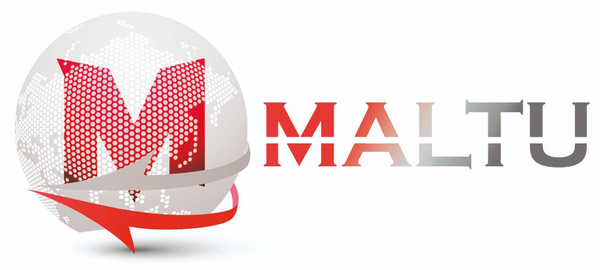Supply chain management is the handling of the entire production flow of a good or service. Starting from the raw components all the way to delivering the final product to the consumer. A company creates a network of suppliers that move the product along from the suppliers of raw materials to those organizations that deal directly with users. According to CIO, there are five components of traditional supply chain management systems which are Planning, Sourcing, Manufacturing, Delivery and Logistics, Returning. Effective supply chain management systems minimize cost, waste and time in the production cycle. The industry standard has become a just-in-time supply chain where retail sales automatically signal replenishment orders to manufacturers. Retail shelves can then be restocked almost as quickly as product is sold. One way to further improve on this process is to analyze the data from supply chain partners to see where further improvements can be made.
Types of Supply Chain Models
- Continuous Flow Model: One of the more traditional supply chain methods, this model is often best for mature industries. The continuous flow model relies on a manufacturer producing the same good over and over and expecting customer demand will little variation.
- Agile Model: This model is best for companies with unpredictable demand or customer-order products. This model prioritizes flexibility, as a company may have a specific need at any given moment and must be prepared to pivot accordingly.
- Fast Model: This model emphasizes the quick turnover of a product with a short life cycle. Using a fast chain model, a company strives to capitalize on a trend, quickly produce goods, and ensure the product is fully sold before the trend ends.
- Flexible Model: The flexible model works best for companies impacted by seasonality. Some companies may have much higher demand requirements during peak season and low volume requirements in others. A flexible model of supply chain management makes sure production can easily be ramped up or wound down.
- Efficient Model: For companies competing in industries with very tight profit margins, a company may strive to get an advantage by making their supply chain management process the most efficient. This includes utilizing equipment and machinery in the most ideal ways in addition to managing inventory and processing orders most efficiently.
- Custom Model: If any model above doesn't suit a company's needs, it can always turn towards a custom model. This is often the case for highly specialized industries with high technical requirements such as an automobile manufacturer.
- Apple
Apple Inc. is an American multinational technology company that specializes in consumer electronics, software and online services headquartered in Cupertino, California, United States. Apple is the largest technology company by revenue and as of May 2022, it is the world's second biggest company by market capitalization, the fourth-largest personal computer vendor by unit sales and second-largest mobile phone manufacturer. It is one of the Big Five American information technology companies. As the market for personal computers expanded, Apple lost considerable market share to the lower-priced duopoly of the Microsoft Windows operating system on Intel-powered PC clones (also known as "Wintel"). Over the next decade, Jobs guided Apple back to profitability through a number of tactics including introducing the iMac, iPod, iPhone and iPad to critical acclaim, launching "Think different" and other memorable advertising campaigns, opening the Apple Store retail chain, and acquiring numerous companies to broaden the company's product portfolio. When Jobs resigned in 2011 for health reasons, and died two months later, he was succeeded as CEO by Tim Cook. Apple became the first publicly traded U.S. company.
Website : http://www.apple.com/my
- Starbuck
Begins in 1971 along the cobblestone streets of Seattle’s historic Pike Place Market. It was here where Starbucks opened its first store, offering fresh-roasted coffee beans, tea and spices from around the world for our customers to take home. Our name was inspired by the classic tale, “Moby-Dick,” evoking the seafaring tradition of the early coffee traders. Starbucks would soon expand to Chicago and Vancouver, Canada and then on to California, Washington, D.C. and New York. By 1996, Starbucks would cross the Pacific to open their first store in Japan, followed by Europe in 1998 and China in 1999. Over the next two decades, they would grow to welcome millions of customers each week and become a part of the fabric of tens of thousands of neighbourhoods all around the world.
Website : https://www.starbucks.com/
- Google LLC
An American multinational technology company that focuses on artificial intelligence,https://en.wikipedia.org/wiki/Google - cite_note-11 search engine technology, online advertising, cloud computing, computer software, quantum computing, e-commerce, and consumer electronics. It has been referred to as the "most powerful company in the world" and one of the world's most valuable brands due to its market dominance, data collection, and technological advantages in the area of artificial intelligence. Google was founded on September 4, 1998, by Larry Page and Sergey Brin while they were PhD students at Stanford University in California. Together they own about 14% of its publicly listed shares and control 56% of the stockholder voting power through super-voting stock. The company went public via an initial public offering (IPO) in 2004. In 2015, Google was reorganized as a wholly owned subsidiary of Alphabet Inc. The company has since rapidly grown to offer a multitude of products and services beyond Google Search, many of which hold dominant market positions. These products address a wide range of use cases, including email (Gmail), navigation (Maps), cloud computing (Cloud), web browsing (Chrome), video sharing (YouTube), productivity (Workspace), operating systems (Android), cloud storage (Drive), language translation (Translate), photo storage (Photo), video calling (Meet), smart home (Nest), smartphones (Pixel), wearable technology (Fitbit), gaming (Stadia), music streaming (YouTube Music), video on demand (TV), artificial intelligence (Assistant), machine learning APIs (TensorFlow), AI chips (TPU), and more. Discontinued Google products include Glass, Google+, Reader, Play Music, Nexus, Hangouts, and Inbox by Gmail.



